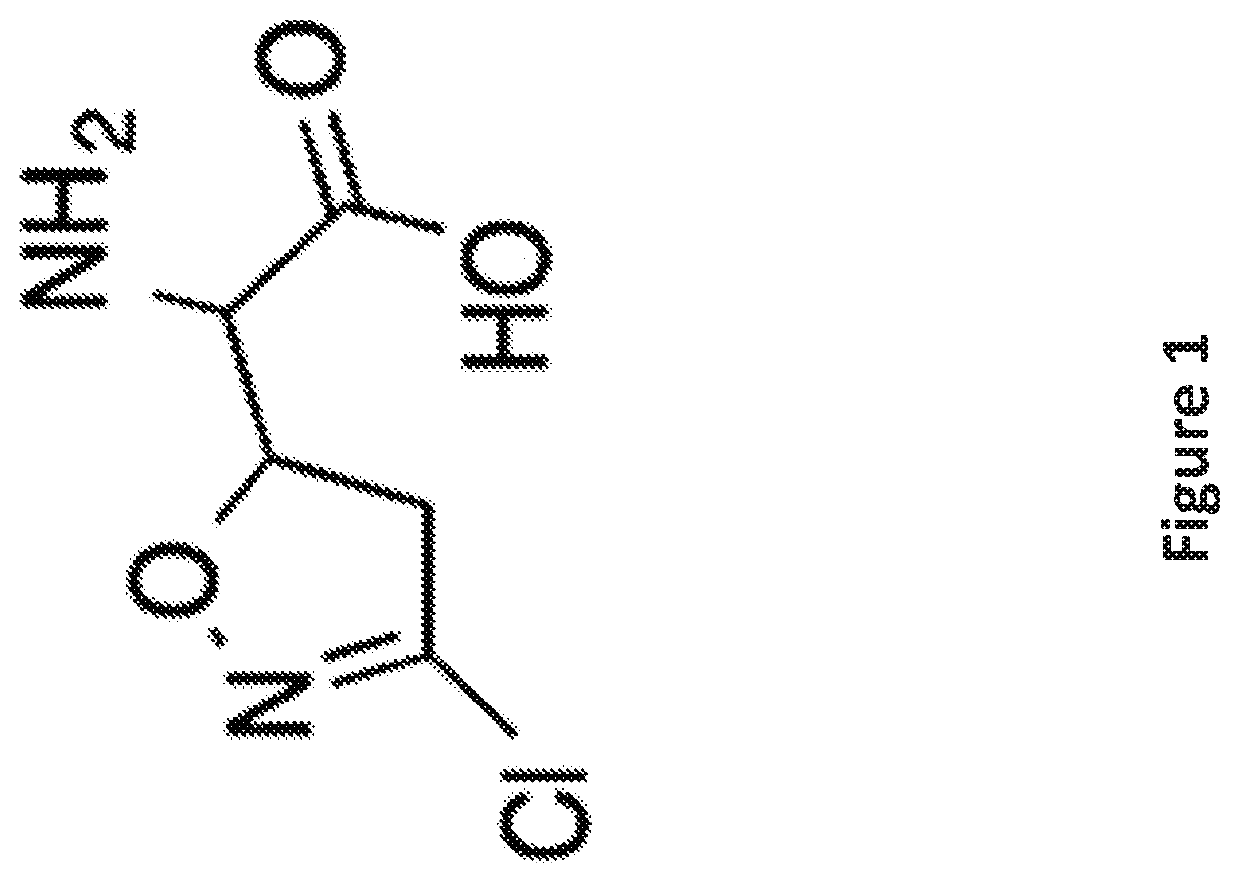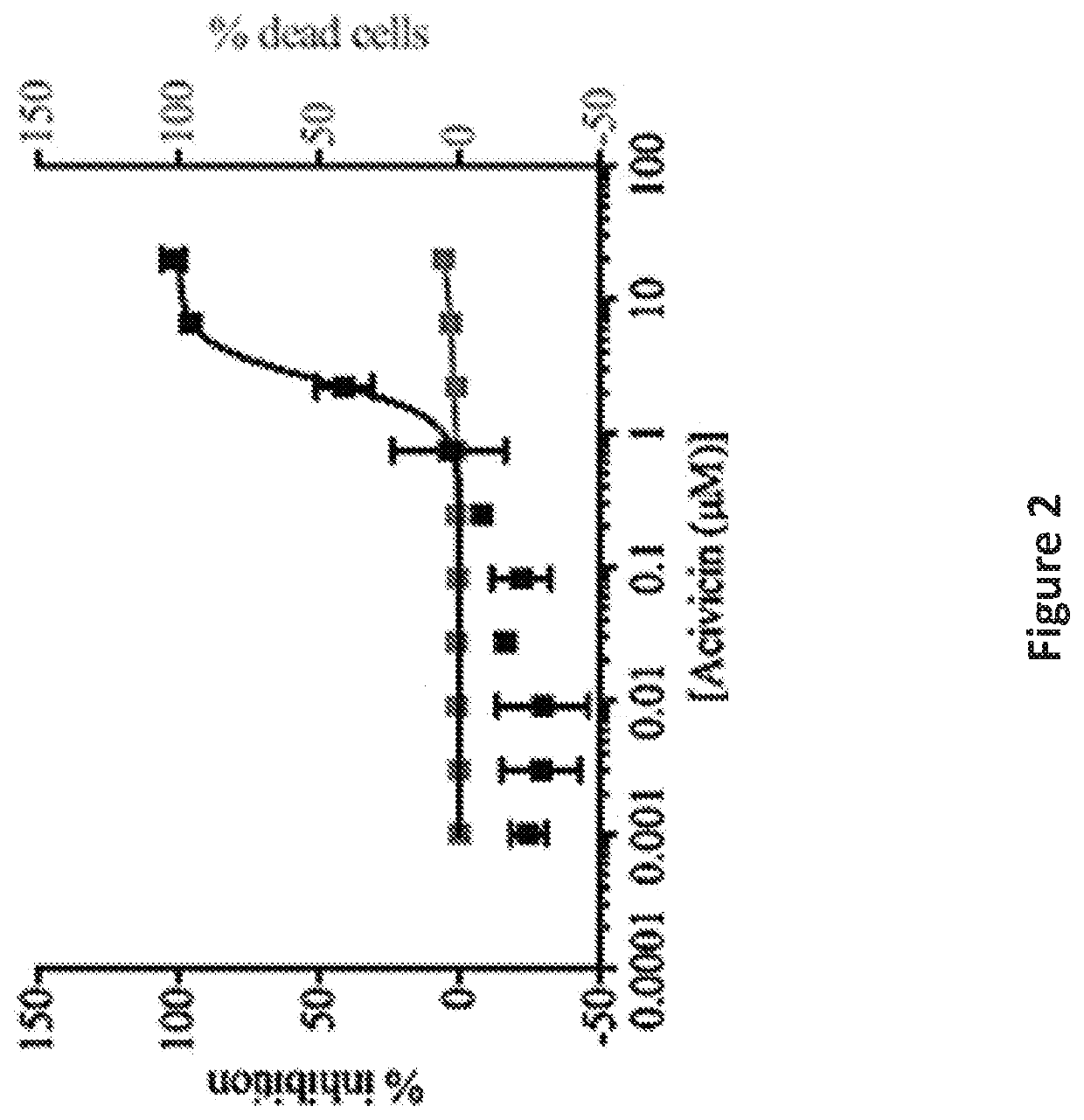Methods of treating neurodegeneration
a neurodegenerative and neurodegeneration technology, applied in the field of neurodegeneration treatment methods, can solve the problems of neurodegeneration, neurodegeneration and/or death of neuron cells, and the clinical management of neurodegenerative remains a significant challenge in medicine, so as to promote the survival of cns neurons and reduce neuronal injury
- Summary
- Abstract
- Description
- Claims
- Application Information
AI Technical Summary
Benefits of technology
Problems solved by technology
Method used
Image
Examples
examples
[0081]The following examples are put forth so as to provide those of ordinary skill in the art with a complete disclosure and description of how to make and use the present invention, and are not intended to limit the scope of what the inventors regard as their invention, nor are the examples intended to represent or imply that the experiments below are all of or the only experiments performed. It will be appreciated by persons skilled in the art that numerous variations and / or modifications may be made to the invention as shown in the specific aspects without departing from the spirit or scope of the invention as broadly described. The present aspects are, therefore, to be considered in all respects as illustrative and not restrictive.
[0082]Efforts have been made to ensure accuracy with respect to numbers used (e.g., amounts, temperature, etc.) but some experimental errors and deviations should be accounted for. Unless indicated otherwise, parts are parts by weight, molecular weigh...
example i
tion of Acivicin as an Inhibitor of Microglia Activation
[0083]To identify inhibitors of microglia activation, an assay as described in U.S. Ser. No. 15 / 109,163, was used to screen a library of 1907 clinical drugs and bioactive compounds. The criteria for hits were ≥50% inhibition of activation and ≤3% cell death to exclude toxic compounds. This represents a three standard deviation difference from the mean value of negative control activated cells. 128 compounds were selected from the screen that satisfied these criteria for dose response curves. Acivicin, a γ-glutamyl transpeptidase inhibitor, was identified among the compounds and was selected for additional characterization as it was an unexpected target for microglial activation and had not been previously linked with neurological diseases.
[0084]Acivicin is a glutamine analog that irreversibly inhibits glutamine-dependent amidotransferases known to be a potent γ-glutamyl transpeptidase inhibitor (Smith, T. K et al., Proc Natl Ac...
example 2
tamyl Transpeptidase Expression in Various Neurodegenerative Disease Tissues
[0086]Tissues from various neurodegenerative diseases were tested for γ-glutamyl transpeptidase expression. The difference in expression between γ-glutamyl transpeptidase in normal tissue versus tissues form animal models of MS and AD are shown in FIGS. 5A and 5B.
[0087]First, tissues from a mouse model of multiple sclerosis, the EAE model, were tested for γ-glutamyl transpeptidase levels. Spinal cord sections from healthy mice and EAE mice at peak EAE symptoms were immunohistochemically stained for GGT1 in spinal cord sections from healthy mice. A dramatic upregulation of γ-glutamyl transpeptidase was in the spinal cord after EAE. FIG. 5 shows the staining data presented as a mean±s.e.m., with an n=5 for both the healthy mice and the EAE mice. The mice with peak EAE demonstrated a highly elevated level of γ-glutamyl transpeptidase in the spinal cord sections compared to the normal mice.
[0088]γ-glutamyl trans...
PUM
| Property | Measurement | Unit |
|---|---|---|
| Cell angle | aaaaa | aaaaa |
Abstract
Description
Claims
Application Information
 Login to View More
Login to View More - R&D
- Intellectual Property
- Life Sciences
- Materials
- Tech Scout
- Unparalleled Data Quality
- Higher Quality Content
- 60% Fewer Hallucinations
Browse by: Latest US Patents, China's latest patents, Technical Efficacy Thesaurus, Application Domain, Technology Topic, Popular Technical Reports.
© 2025 PatSnap. All rights reserved.Legal|Privacy policy|Modern Slavery Act Transparency Statement|Sitemap|About US| Contact US: help@patsnap.com



